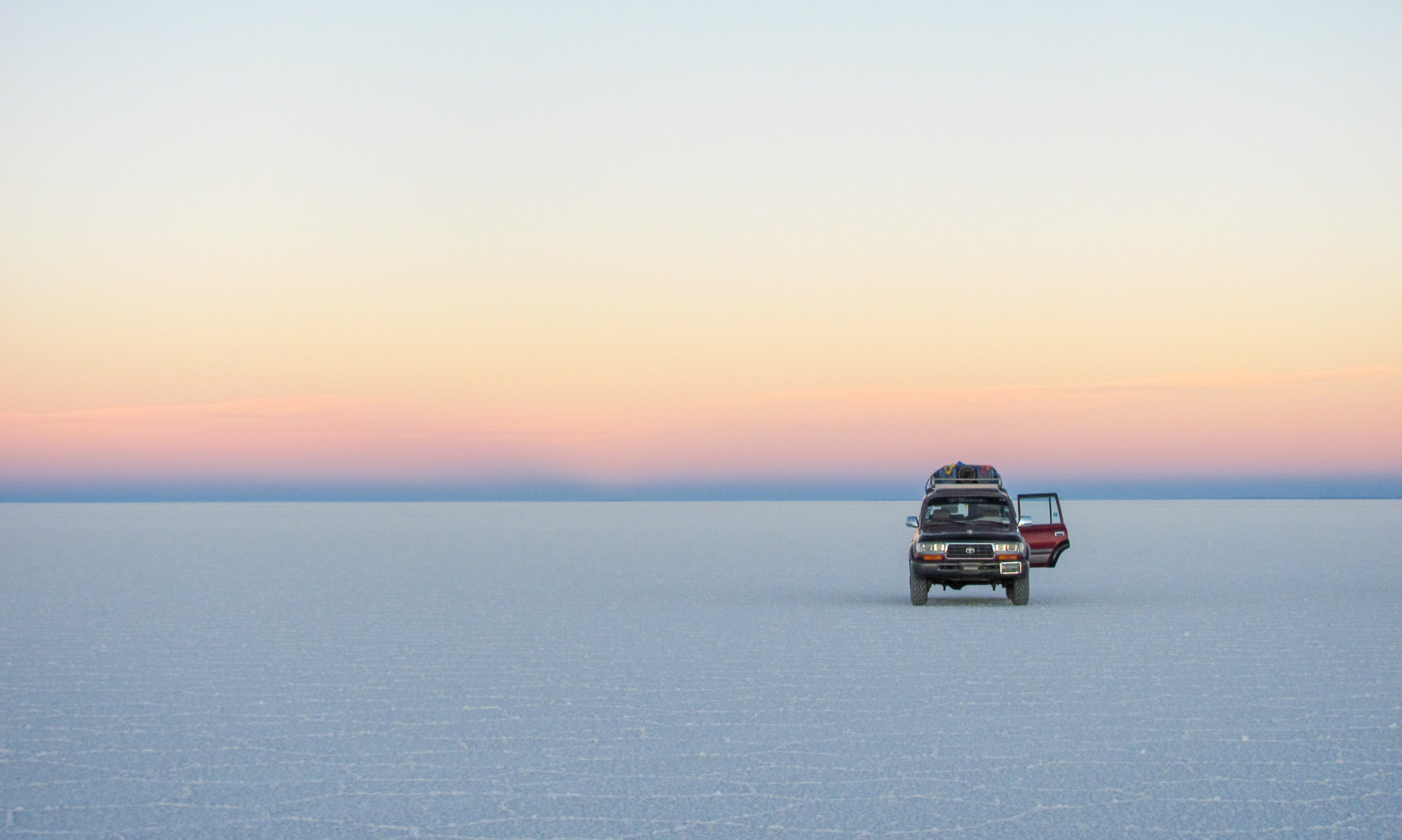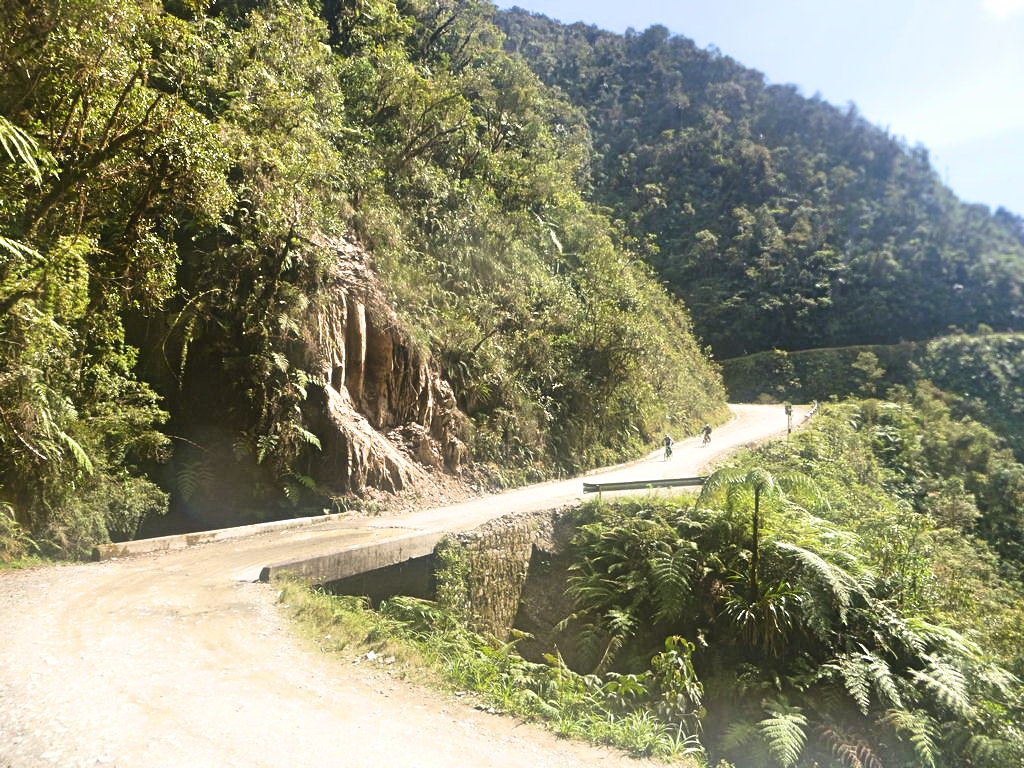Few roads in the world are considered more dangerous than the road from La Paz to the Yungas in Bolivia, and it got it’s nickname ‘Death Road’ for as reason. Imagine cruising down a narrow bumpy unpaved road at 50KM/H with a steep rock-side on your right and a 1500M+ vertical drop on your left. Mostly without rails and very steep.. If you’re an fearless thrill-seeker, you have come to the right place.
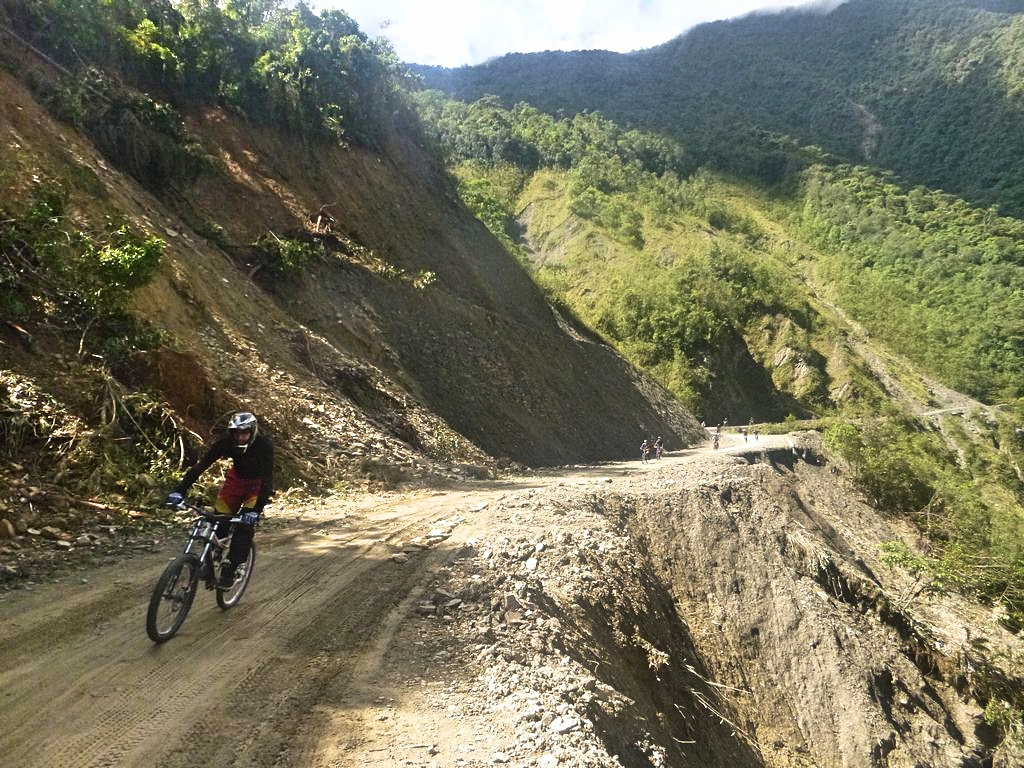
The name Death Road has a double origin. It was build by Paraguayan prisoners-of-war in the 1930’s during a war between Bolivia and Paraguay (they still don’t like each-other very much) and the construction claimed thousands of lives. Deserters were rewarded with either a bullet or a very quick one-way trip to the bottom of the canyon. But once it was finished it did not stop killing. The road, at many place less than 3 meters wide, was being used as a two-way street for industrial traffic. Truck drivers were forced to cross each other in narrow hairpin-turns at a 20% grade slope which resulted in the road claiming more than 300 casualties a year. Yes, that means someone died nearly daily on this 64KM (40 miles) long road.
This continued until 2007 when a new road was taken in use, and the road was left abandoned.. only to be re-discovered as one of the most epic mountain bike trails in the world not too long after! Nowadays people flock from all parts of the world to have a go at this adrenaline-fueled thrill-ride. In 64 kilometers you decent 3600 meters from the high Andes through misty cloud forest into the humid steamy amazon-jungle. Not only will the ride itself leave you trembling from excitement, the views along the way are mindbogglingly beautiful.
– Practical Information –
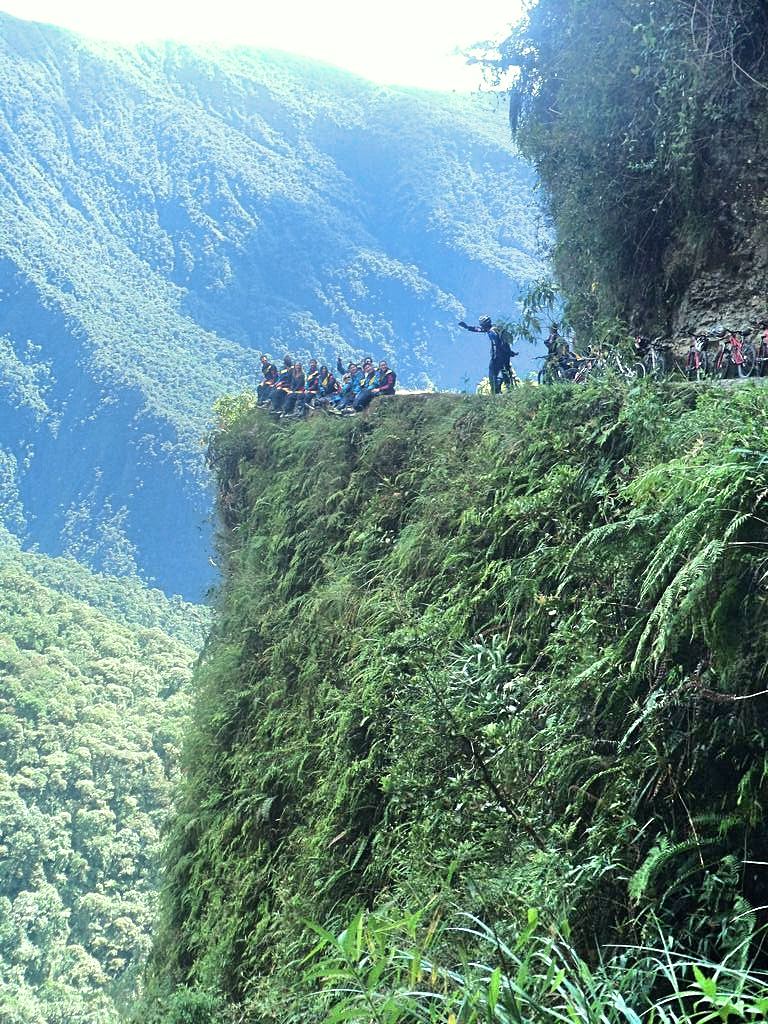
When: Death Road is opened all-year but it is sometimes closed when heavy downpour makes it too slippery and dangerous. This weather only occurs from December – March so if you travel outside of these months you’re most probably fine.
In & Out: tours leave exclusively from La Paz (see my article on La Paz on how to get there) and drop you off either in the Yungas (Coroico to be more precise) where the road ends or take you back to La Paz (don’t worry, on your way back you take the new road). You could take your own bike or hire gear to go solo but the climb to the start of the road is quite strenuous (ascent of 1000 meters) and will certainly take you a half-day on its own so I do not recommend it.
Budget: 250 – 900 Bolivianos (30-110 euro / 35-130$) depending on which company you go with.
– Who to go with? –
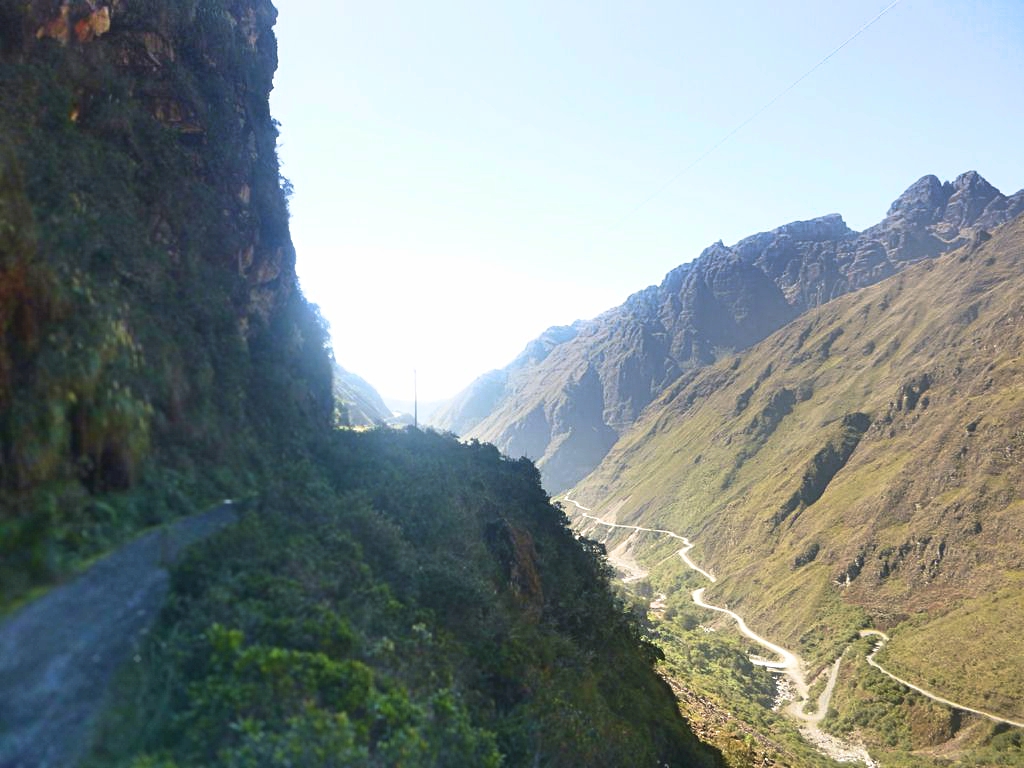
All agencies offer roughly the same: pick-up in La Paz, downhill bike from La Cumbre to Coroico, lunch in the Yungas and drop-off back in La Paz where you get a CD-copy with photos and a ‘I survived Death Road’ t-shirt. The prices however vary wildly and mostly depend on the quality of the gear that is provided. Roughly put, for 250 bolivianos you get an old bike with thin tires, (almost) no suspension and shitty brakes. Double it and you get a (full) suspension bike of good quality that is safe to use. Finally for 750 bolivianos you get top-rate down-hill bikes with great suspension (your ass will be thanking you later;) ). Needless to say, this is not the place to be a cheapskate. With shit gear you literally risk your life in an already dangerous activity. With top-grade bikes on the other hand you’ll not only be safer but also be able to go a lot faster due to the enhanced traction and suspension.
Based on the above I’ll discuss a few companies that I became familiar with while talking with other travelers, visiting the tour-offices and my own experiences during the down-hill ride itself. Each of these companies has a good reputation and provides good quality gear.
Vertigo (600 Bolivianos) Vertigo is praised for its small groups (7 or 8 people). Good guides, good equipment and not overly expensive.
Barracuda (580 Bolivianos) Another company with an excellent reputation. However when out on the road the Barracuda guys were the slowest group out there. The guides take safety to the extreme which means the front-runner of the group will ride at a very low pace. If you’re unsure about the safety of the whole activity this is a perfect choice. If you are more of a daredevil this can be slightly annoying.
Gravity (880 Bolivianos) Gravity is the biggest and most well known company out there. Excellent bikes, excellent guides. However this comes at a price. If you want to go with gravity be prepared to empty your pockets.
Altitude (740 Bolivianos) After careful consideration this was my pick, and my absolute recommendation for you. They have the best down-hill bikes out there meaning you will have the most comfortable ride and the added traction allows you to go very fast. Like most tours they ride out with multiple guides meaning the front-runners of the group can cruise down and overtake other groups while there are also guides available for the rest of the group. Great tour, great guides, not cheap but they do provide the best equipment in town.
– The ride –
After about a bus-ride of about an hour you arrive at La Cumbre (4700M elevation), where you get off and put on your gear. Some last-minute safety instructions are given along with some horror stories from along the road. You’ll get few minutes to cycle around and test out your bike to make sure it is fully functioning before you head off.
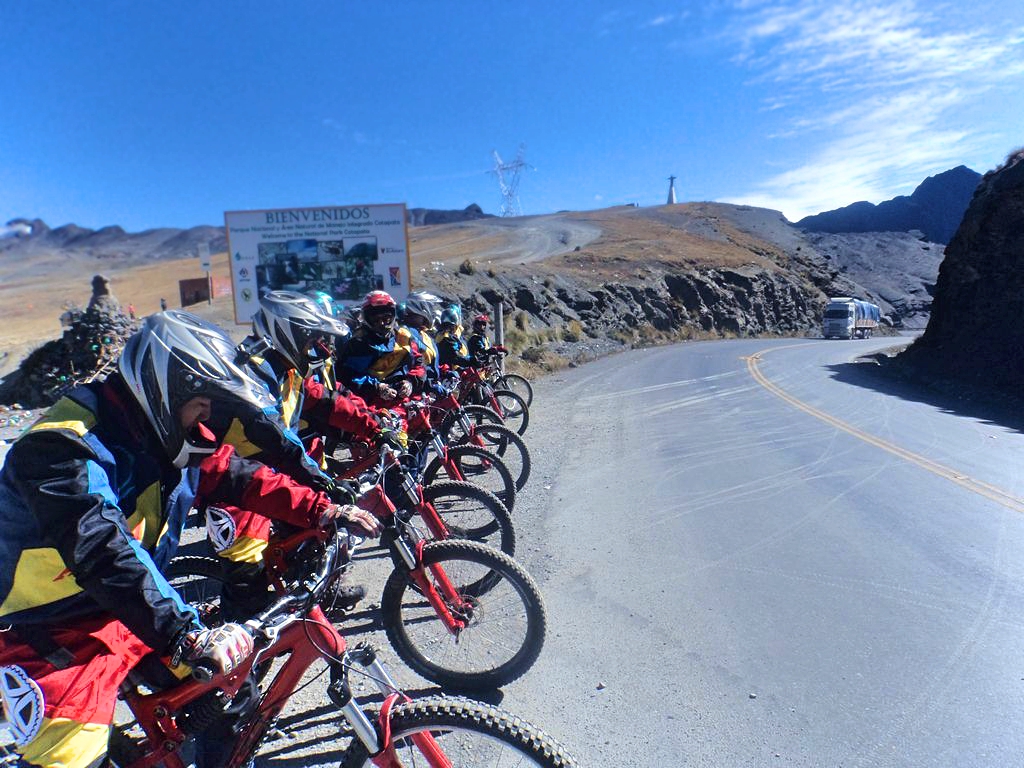
You start with a small-test part over a very rocky path. You think to yourself ‘if the whole road is like this I will never survive’ – fortunately it isn’t. At the end of the path you’re immediately smacked in the face with a gorgeous view of the snow-capped Andes peaks. After a few hundred meters the ‘camino de la Muerte’ starts emerging in front of you. You can see the road snaking ahead for miles with dramatic cliffs on its side. This is where you pick up pace. For safety reasons you have to drive left (yes, that is the canyon-side) so you have the best overview. Whenever passing someone you shout out ‘passing on your left’ (or right) so ensure no collisions occur. The views are terrific and the ride is fast, bumpy but awesome.
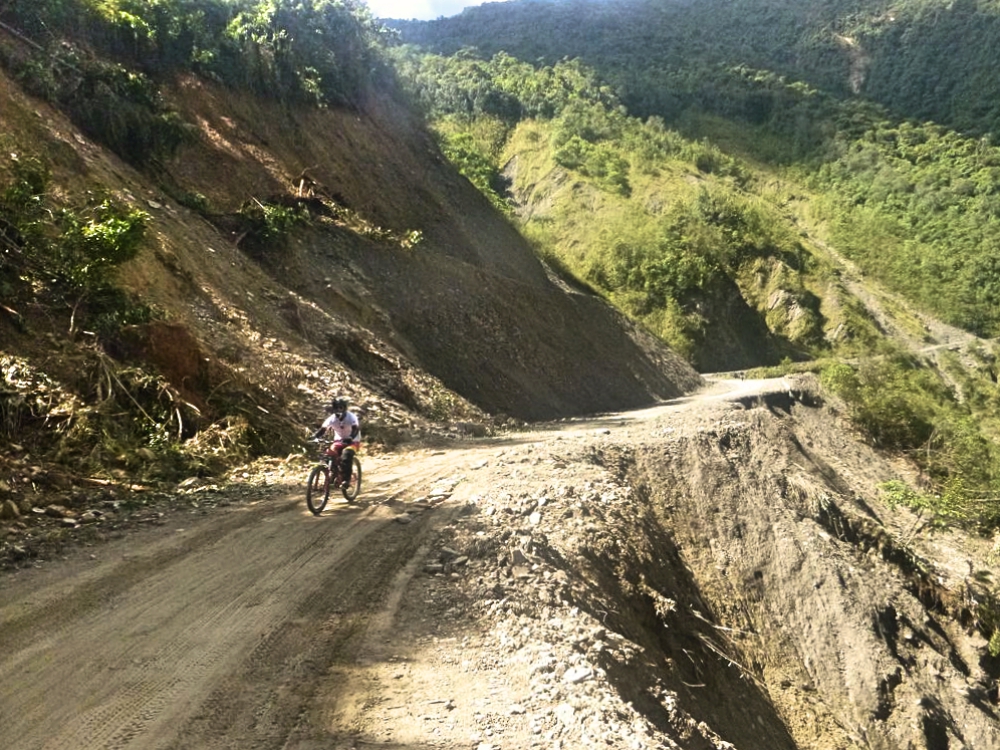
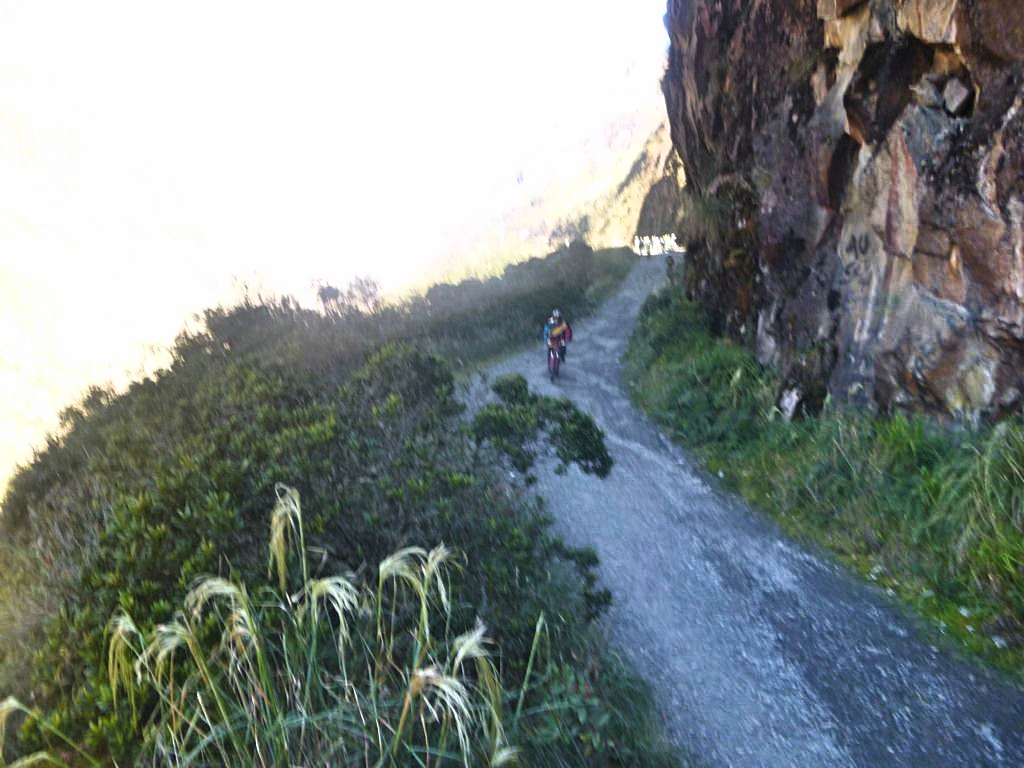
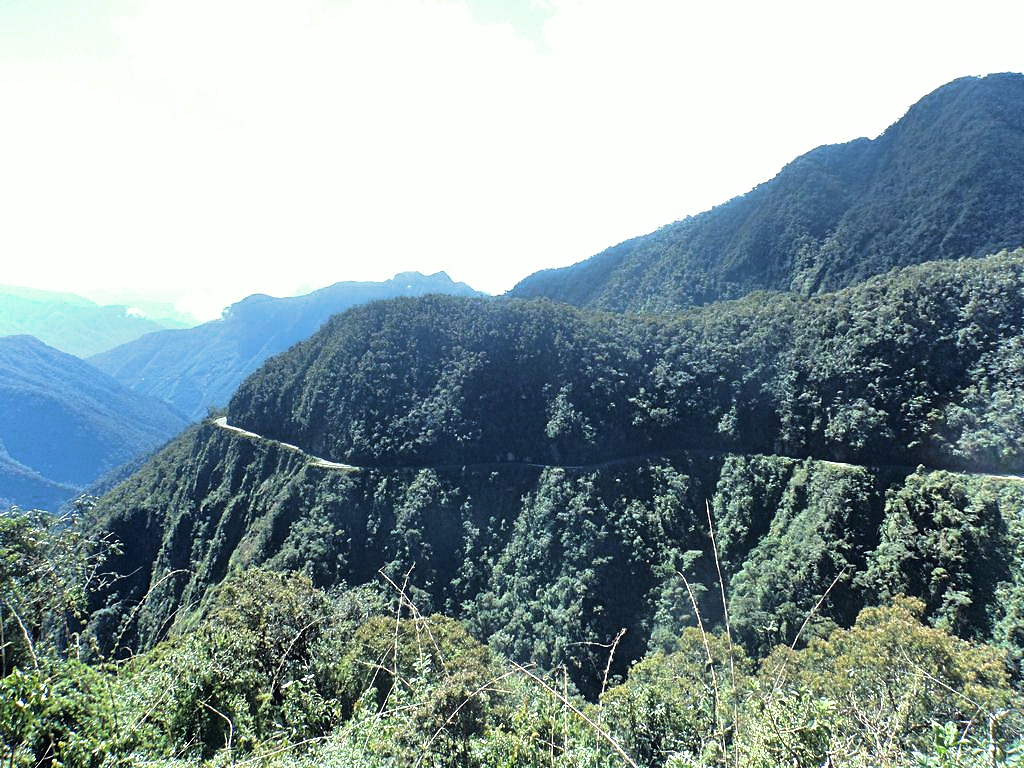
About every 10 minutes you make a stop at either a point of interest (probably a place where bus went over the cliff with a small monument standing testimony of that today) or a wider point to have a quick snack, bike-check or sip from your water. Slowly you’ll start to notice the surroundings are changing. The road gets dustier, the air more humid, more streams start to cross the road and the temperature rises. You’re dropping into cloud-forest and later into the jungle. at the end of the unpaved-path you’ll have a longer break to go to the toilet, replenish your water and you have the option to strip off your – now undoubtedly sweaty – biker-overall. From here on the road gets smoother meaning you can go faster. By now your are also getting used to the biking so you’ll probably feel more comfortable picking up the pace a bit.
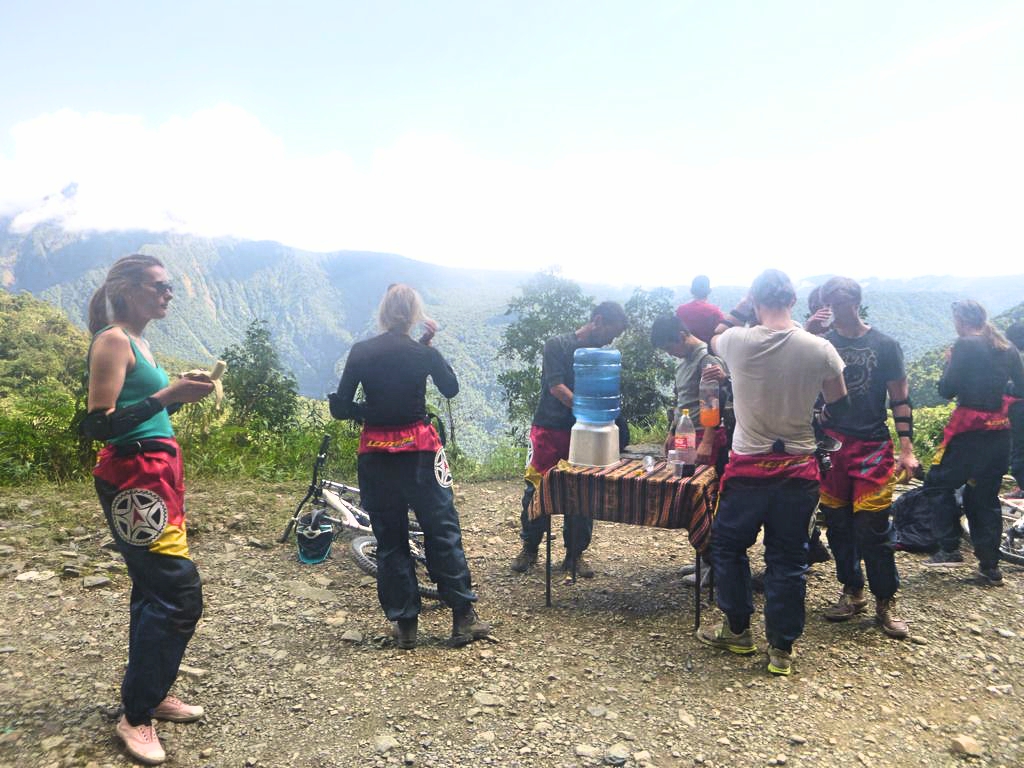
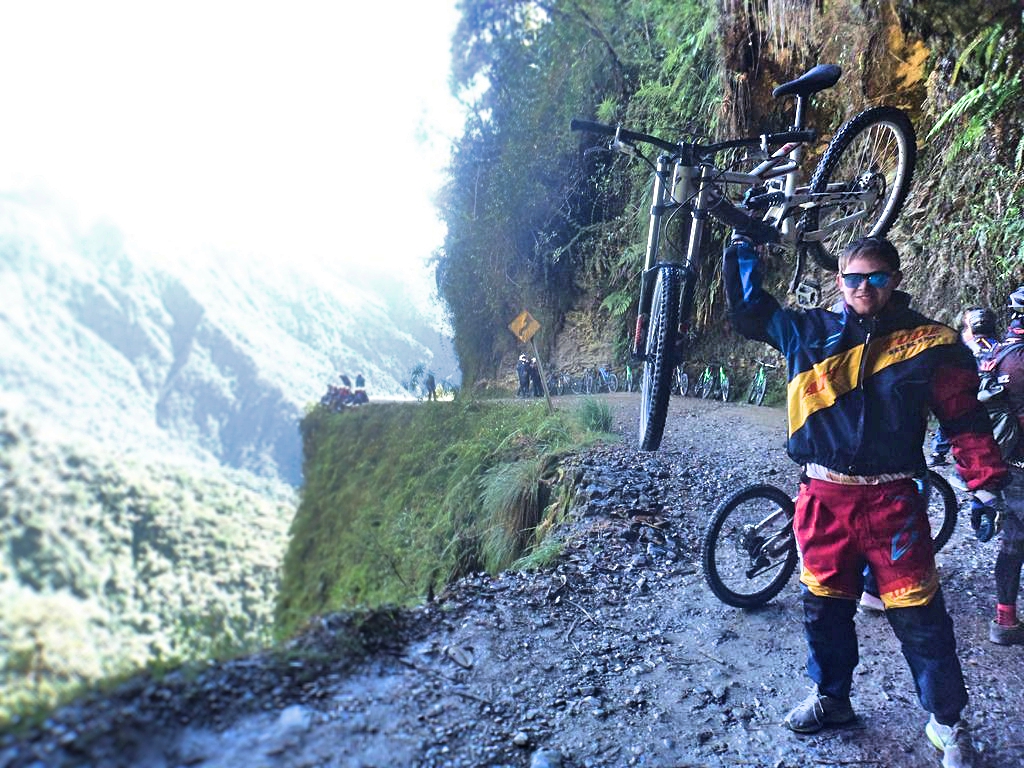
Before you realize it you arrive at Coroico where the bus takes you to a nearby hotel that serves a buffet-lunch of sub-par quality (but at least you can binge and replenish your calories!) along side a relaxing pool where you can fresh up and cool-down. After a few well-deserved beers you’ll head back to La Paz sometime in the afternoon. The ride back is about 2-3 hours, depending on traffic.
Summing it up, Death Road is a must when visiting La Paz. It will probably be the most expensive thing you do in Bolivia (a Salar Uyuni tour costs slightly more but considering that is a 3-day 4WD tour you get a lot more back for your buck) but it is absolutely worth it.
